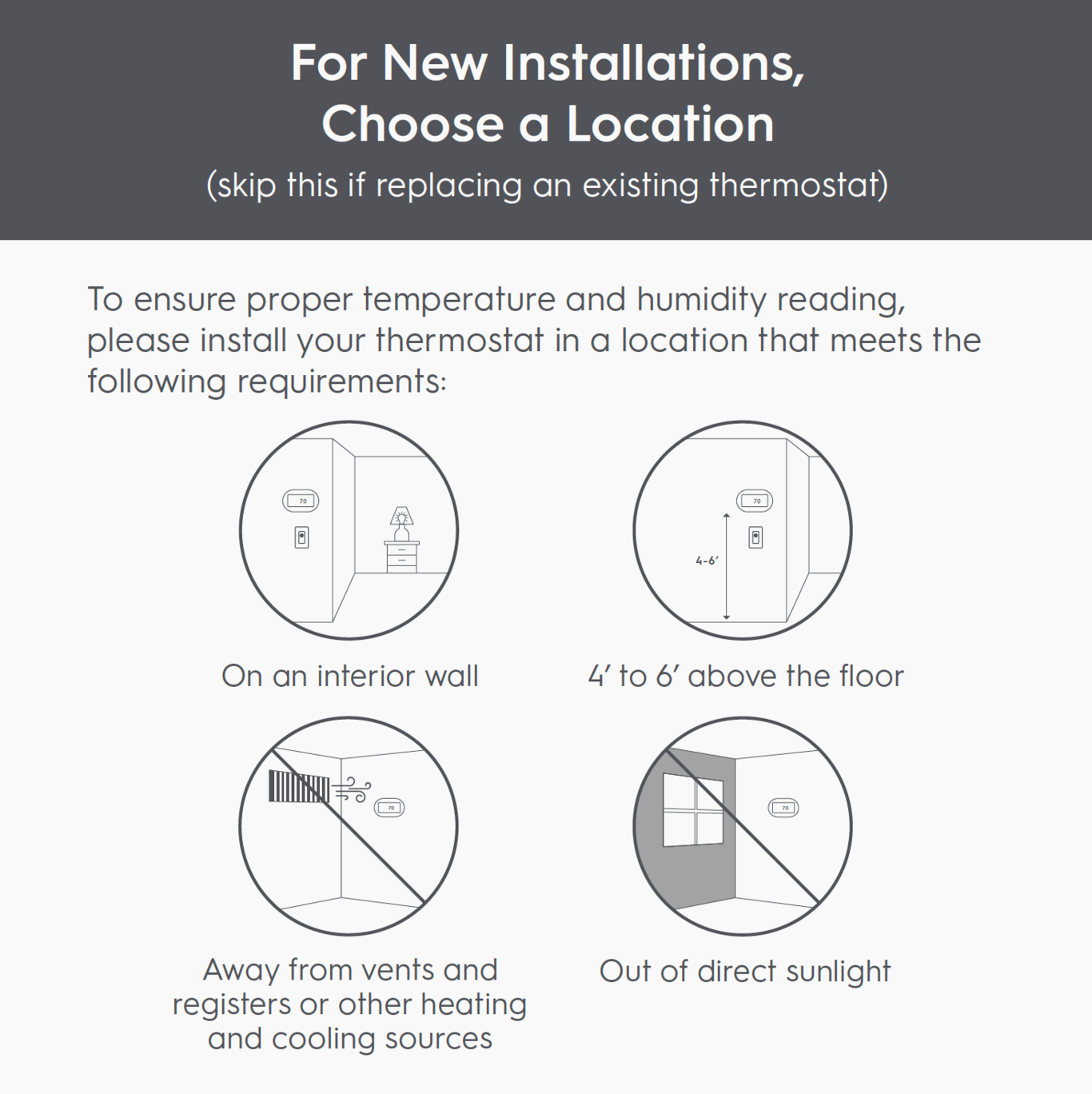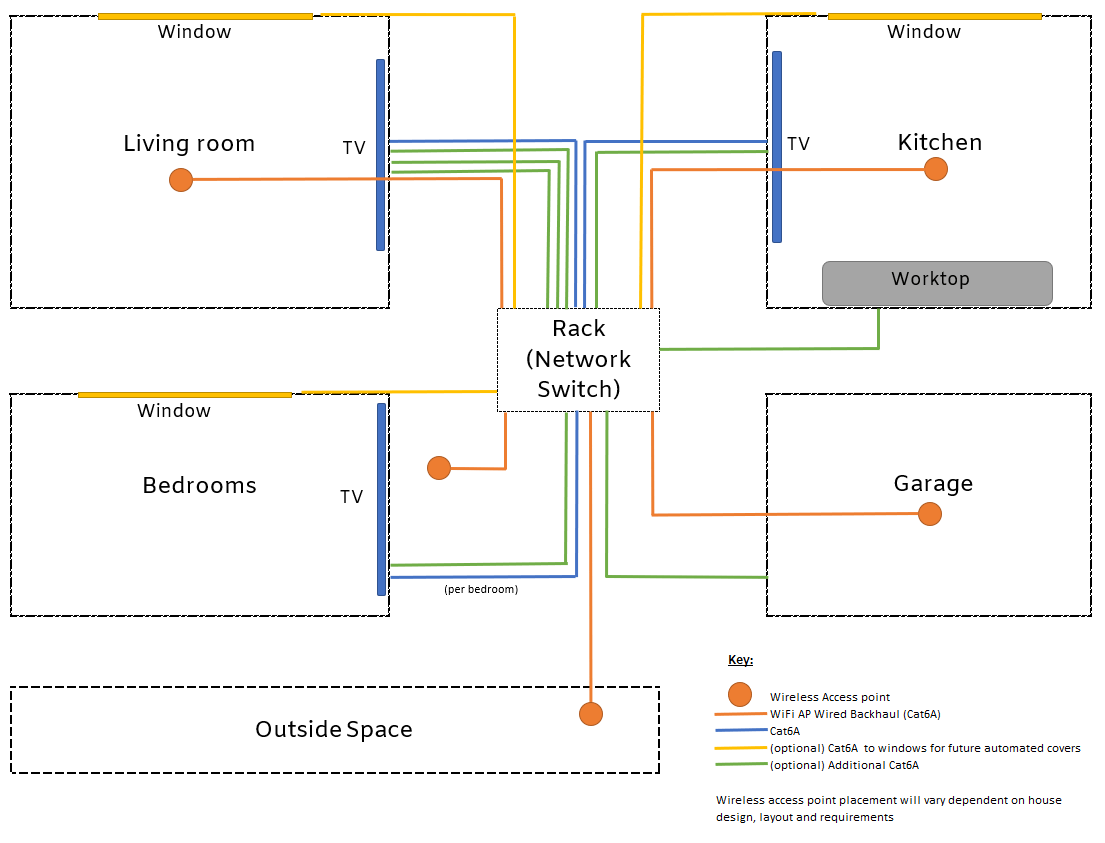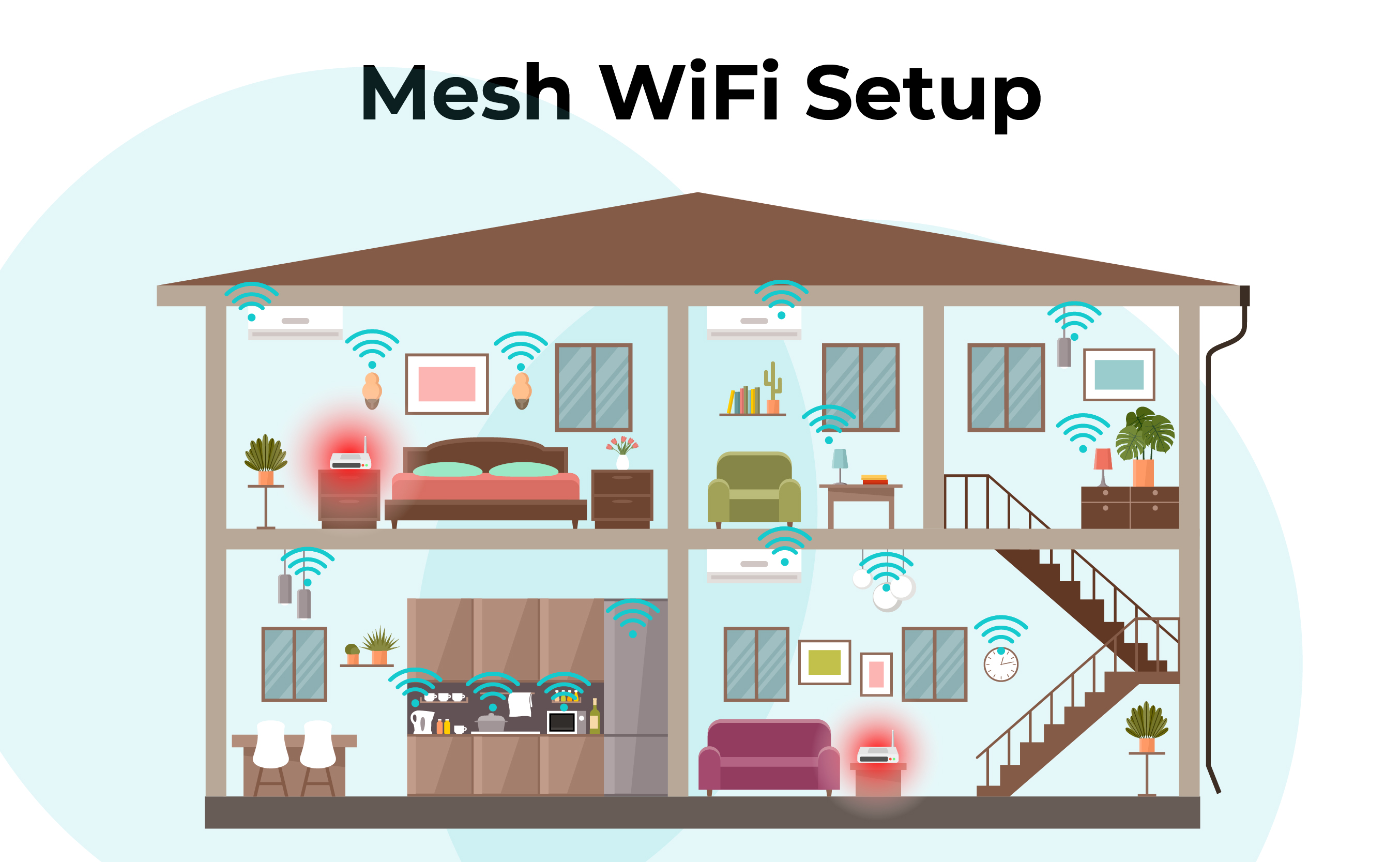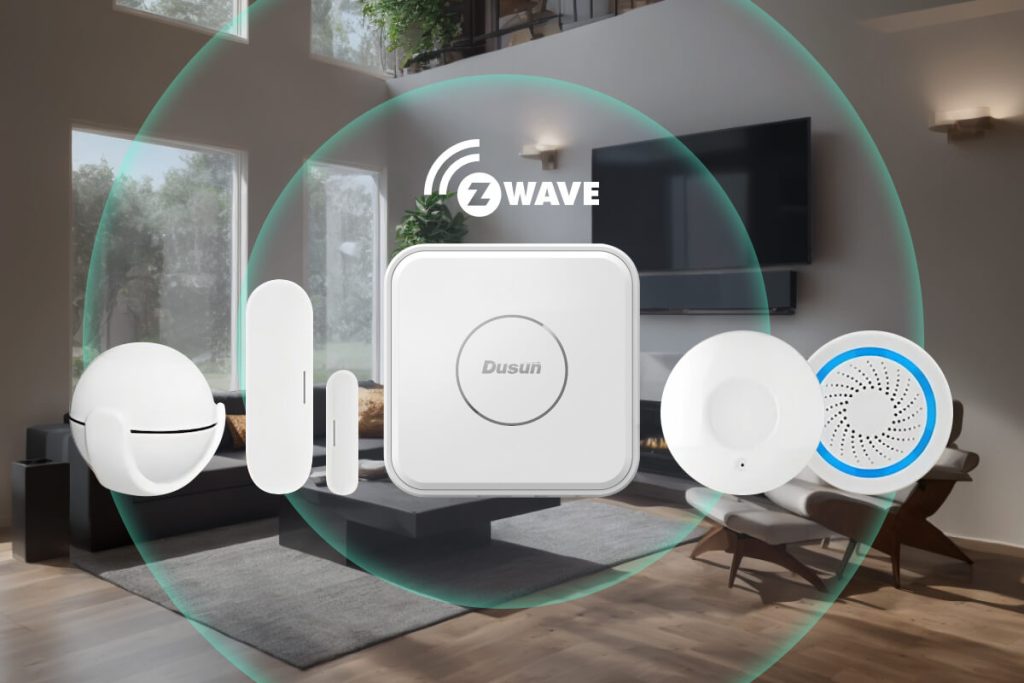Designing a Smart Home Layout: Device Placement, Network Considerations & Future-Proofing
Creating a smart home that’s efficient, reliable, and ready for tomorrow’s technologies requires more than just buying devices and plugging them in.
In this comprehensive article, we’ll walk through three essential dimensions: 1) smart device placement and space planning, 2) network and infrastructure considerations, and 3) future-proofing and scalability.
Whether you’re planning a full-home automation installation or incrementally upgrading rooms, the principles below will help you build thoughtfully and sustainably.
1. Device Placement & Space Planning
Smart devices only deliver their full value when placed in the right location, in the right way.
Improper placement can lead to poor performance, signal loss, or sub-optimal user experience.
Key placement principles
-
Coverage & reachability: For sensors, cameras, motion detectors, and voice assistants, consider line of sight, field of view and signal reach. For instance, a motion sensor in a corner may only detect part of a room; a camera placed too high or too near glare may have compromised image quality.
-
Signal environment: Many smart home devices rely on Wi-Fi, Zigbee, Z-Wave, Thread or proprietary protocols. Materials like concrete, metal framing, large mirrors and thick walls can degrade signal strength. techaiddubai.ae+2Blackview Official Store+2
-
Power and wiring access: Smart hubs, wall-touch panels, smart thermostats and other “core” devices often require wiring or dedicated power circuits. In new construction or major renovation, planning wiring pathways (Ethernet, USB-C, AC power) gives more reliability than ad-hoc plug-in solutions. eaelectrics.com.au+1
-
Human-centric design: The placement must align with how people live. A smart light switch or wall controller should be at ergonomic height and convenient to use. A smart speaker should be placed where voices are heard clearly and not blocked by furniture or drapes.
-
Avoid interference: Electronic appliances (microwaves, baby monitors, fridges), other wireless networks, and physical obstructions can cause interference or signal drop-outs. For example, placing a Wi-Fi router inside a metal cabinet is usually a bad idea. Tom’s Guide+1
-
Room function awareness: Determine the priority of devices by room usage. In a home office you may prioritise a wired Ethernet drop and high-end hub; in a bedroom you might emphasise quiet, mesh Wi-Fi coverage and minimal visible tech.
Practical layout checklist
-
Map the rooms on a floorplan and mark potential device clusters (e.g., lighting + sensors around entryways, media hub in living room, thermostat in central hallway).
-
Identify power outlets, network outlets and potential hub/wiring locations.
-
Conduct a Wi-Fi signal survey (can use smartphone apps) to find dead zones or weak spots.
-
For multi-floor homes, identify vertical and horizontal signal paths; stairs and metal ducts can hamper propagation.
-
For battery-powered devices (sensors, switches) consider ease of battery replacement or re-charging.
-
Label installations with device names, network names, IPs etc so future troubleshooting is easier.
Example placements & tips
-
Smart thermostat: Mount away from direct sunlight, drafts (windows/doors), and heat sources like radiators or vents, so temperature readings are accurate. Blackview Official Store
-
Smart camera: For indoor cameras, avoid facing windows with strong back-light; for outdoor, ensure good weather-proofing and clear field of view, and use Ethernet or PoE if possible for reliability.
-
Mesh Wi-Fi node / router: Central, elevated location, away from large metal objects or appliances; avoid placing it on the floor or tucked away inside furniture. vividelectric.ca
-
Smart hub / gateway: It should have good ventilation, reliable power, wired backhaul if possible, and be somewhere accessible for diagnostics but not in a high-traffic or prone‐to‐tampering location. eaelectrics.com.au+1
2. Network & Infrastructure Considerations
A robust, secure and high-capacity network is the backbone of any effective smart home. Without it, devices may lag, disconnect or fail to communicate properly.
Network architecture essentials
-
Router & Wi-Fi standard: Modern smart homes benefit from Wi-Fi 6 or even Wi-Fi 6E, which support more simultaneous devices, better efficiency and higher throughput. vividelectric.ca+1
-
Mesh vs single access point: Especially in larger homes or homes with challenging layouts (multiple floors, thick walls), mesh Wi-Fi systems eliminate dead zones by distributing access points. techaiddubai.ae+1
-
Wired backhaul & Ethernet drops: For critical devices (smart TVs/streaming, gaming consoles, hub/gateway, some cameras), wired Ethernet provides more stable performance and lower latency than Wi-Fi. Running Cat6 or better wiring during renovation is a smart move. vividelectric.ca+1
-
Segmentation & traffic management: Create a separate IoT or smart-device VLAN or SSID to isolate devices (and potential vulnerabilities) from the main network. Use Quality of Service (QoS) to prioritise critical devices (security cams, hub) over less critical ones. Jack Cooper+1
-
Device protocols & compatibility: Smart home devices use different protocols – Wi-Fi, Zigbee, Z-Wave, Thread, etc. brctv.com+2Wikipedia+2 Using a hub or gateway that supports multiple protocols increases flexibility. For example, the standard Matter is emerging as a unifying standard for interoperability. Wikipedia+1
-
Security & firmware: The network must be secured (strong passwords, up-to-date firmware, guest networks, encryption such as WPA3) and devices must have regular updates. Jack Cooper+1
-
Power / wiring infrastructure: Smart home systems often require dedicated circuits, surge protection, backup power for hubs/cameras (if security is critical) and wiring planning for future loads. eaelectrics.com.au
Network placement & optimization
-
Place your router or main access point in as central a location as possible, ideally elevated and free of clutter. Avoid cupboards, behind furniture or tucked in basements. Tom’s Guide
-
Wi-Fi extenders or mesh nodes should be placed halfway between the main node and the area with weak signal, not at the edge of the current signal. Vesternet
-
Avoid interference sources: microwaves, cordless phones, baby monitors, large metal appliances – these can degrade Wi-Fi performance.
-
In the home office or entertainment areas, use wired connections where possible (Ethernet).
-
Use network monitoring or apps to map signal strength and see where low-signal “dead zones” exist; this data will guide placement and node count. Keith Parnell
Practical network infrastructure checklist
-
List all devices you currently have (and plan to have) with approximate counts, bandwidth needs and wireless vs wired connection.
-
Select a hub or gateway with support for the major protocols (Matter, Zigbee, Zwave) and plan its physical location.
-
Run or plan Ethernet drops to key locations (hub, media centre, home office, any fixed-camera location) if feasible.
-
Choose the router/mesh system with future-proof standards (Wi-Fi 6/6E/7).
-
Configure network segmentation: main network + IoT network + guest network.
-
Set up monitoring tools and note the firmware update schedule.
-
Label wiring and ports for easier modifications later.
3. Future-Proofing & Scalability
A truly smart home isn’t just about the devices you install today — it’s about ensuring the infrastructure and layout can evolve.
The technology landscape changes quickly; your home should accommodate that.
Future-proofing principles
-
Planning for growth: Assume device count will increase. The average home may soon have dozens of smart devices (sensors, actuators, cameras, voice assistants, etc). Your network must support not just today’s load but tomorrow’s. vividelectric.ca+1
-
Open standards & interoperability: As noted, standards like Matter are poised to reduce the risk of device lock-in and improve interoperability across brands. Choosing devices and hubs that participate in such standards helps avoid obsolescence. Wikipedia
-
Wiring and infrastructure readiness: Even if you aren’t running full Ethernet everywhere now, consider running conduit or blank plates during renovation so you can upgrade wiring later with minimal disruption. eaelectrics.com.au
-
Modularity and Zones: Design the layout so you can add zones (e.g., outdoor automation, garage, detached building, basement) without redoing everything. Use hubs/gateways that allow adding modules or protocol expansions.
-
Backup & resilience: For critical systems (security, fire, climate) plan for power backup (battery or generator), network failover (4G/5G LTE plug-in) and hub redundancy.
-
Documentation & labelling: Keep an inventory of devices, IP addresses, hub version, wiring diagrams, network credentials, and physical location of nodes. This documentation makes it far easier to scale, upgrade or troubleshoot later.
-
Stay adaptable: New technologies will emerge (Wi-Fi 7, upgraded Thread mesh, expanded Matter capabilities). Rather than chasing every “latest gadget”, plan for incremental upgrades with the expectation of replacement or expansion every few years.
Scalability checklist
-
Make a list of “phase 1” devices and a wishlist of “phase 2/3” devices (e.g., smart blinds, whole-home audio, EV Charger, detached workshop).
-
Ensure your network core (router/switch) has spare ports, supports link aggregation, and has head-room for future bandwidth increases.
-
Plan for multi-gigabit support if you foresee heavy media-streaming or local data storage (NAS) usage.
-
Choose hubs/gateways that allow multiple protocols and have strong community support (firmware updates, developer ecosystem).
-
Establish policies for device life-cycle: replace firmware-unsupported devices, check compatibility annually, reuse wiring when possible.
-
Regularly audit your network: number of connected devices, peak bandwidth usage, latency, failure logs. Use insights to plan upgrades proactively.
Putting It All Together: Workflow for Homeowners / Installers
-
Define goals – Decide what smart home functions you care about: security, comfort, energy efficiency, entertainment.
-
Map the space – Floorplan rooms, note walls, materials, power outlets, preferred device locations, network drops.
-
Select core infrastructure – Choose router/mesh system, hub/gateway, network switches, wiring plan.
-
Plan device clusters – For each room, decide which devices go where and how they connect (wired, wireless).
-
Install wiring/backhaul first – Run Ethernet/conduit where possible, place hub in central accessible location.
-
Place devices thoughtfully – Follow placement/backhaul tips above to avoid interference or weak coverage.
-
Configure network – Segment networks, secure credentials, enable QoS, name devices with clear labels.
-
Test & benchmark – Use Wi-Fi survey tools, latency tests, device responsiveness tests. Fix dead zones or interference.
-
Document everything – Device inventories, network diagrams, IP assignments, credentials (securely stored).
-
Plan for expansion – Keep a wishlist, spare wiring capacity, budget for future upgrades, and periodically review infrastructure health.
Common Mistakes & How to Avoid Them
-
Placing everything on Wi-Fi without considering wired connections → leads to congestion, latency and unreliable performance in high-device households.
-
Ignoring network security → unsecured IoT devices are prime vectors for attacks. Simple steps like changing default passwords and enabling WPA3 help a lot. Jack Cooper+1
-
Skipping signal/survey testing → many homes have “invisible” weak spots; failing to map them early causes frustration later.
-
Buying devices only based on price or looks, ignoring compatibility → you may end up with gadgets that can’t talk to your hub or can’t be integrated into your routines.
-
Under-estimating future growth → you install a hub and router with zero spare capacity, then add dozens of devices and the system slows down.
-
Poor documentation → years later you’ll forget which switch is on which network, which device has which IP, or where cables go, making troubleshooting very hard.
Conclusion
Designing a smart home layout isn’t just about buying fancy gadgets — it’s about strategy: where devices go, how they connect, and how the system can evolve.
By focusing on thoughtful device placement, robust network infrastructure, and future-ready scalability, you’ll build a smart home that works seamlessly today and adapts gracefully into tomorrow.


















